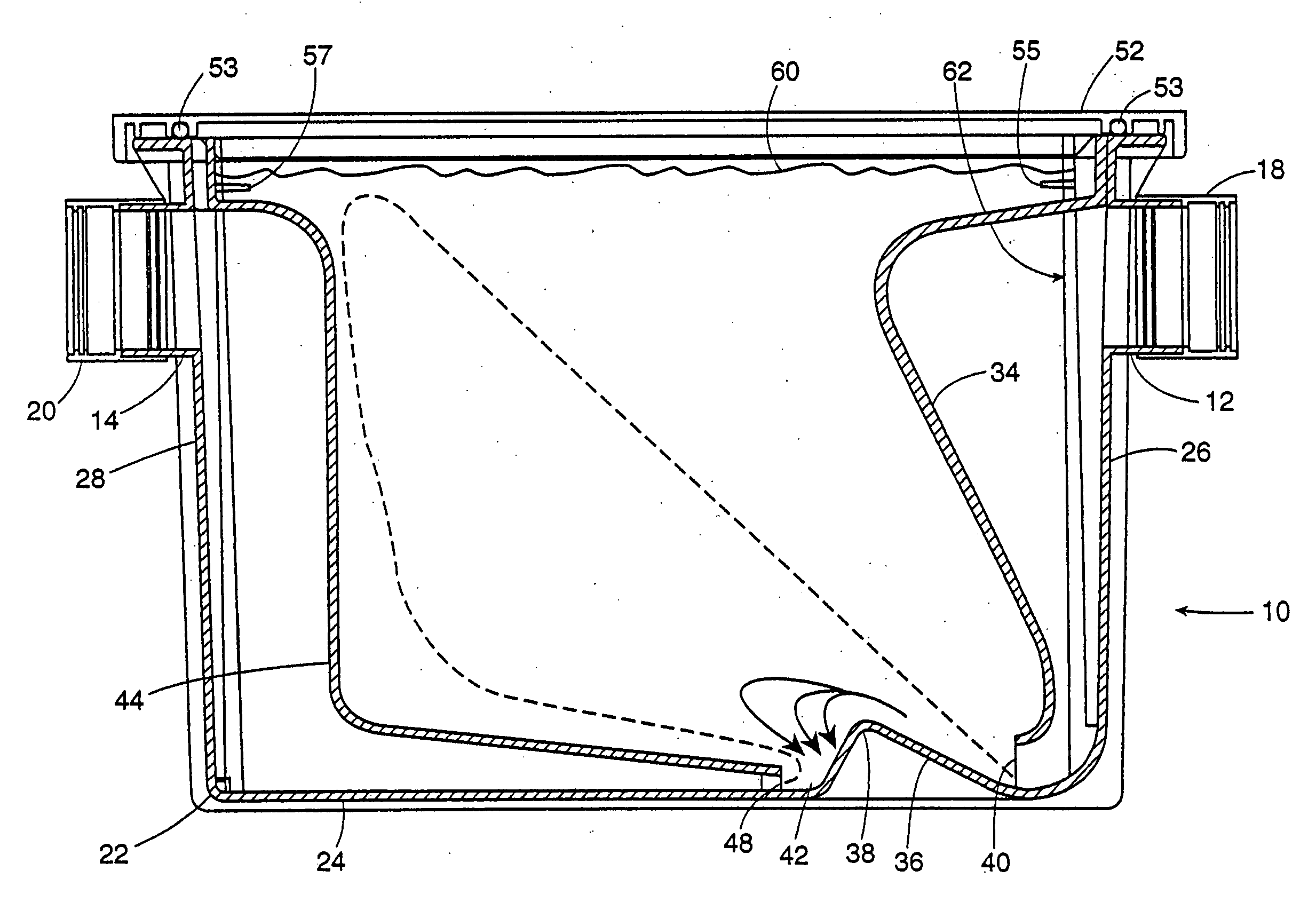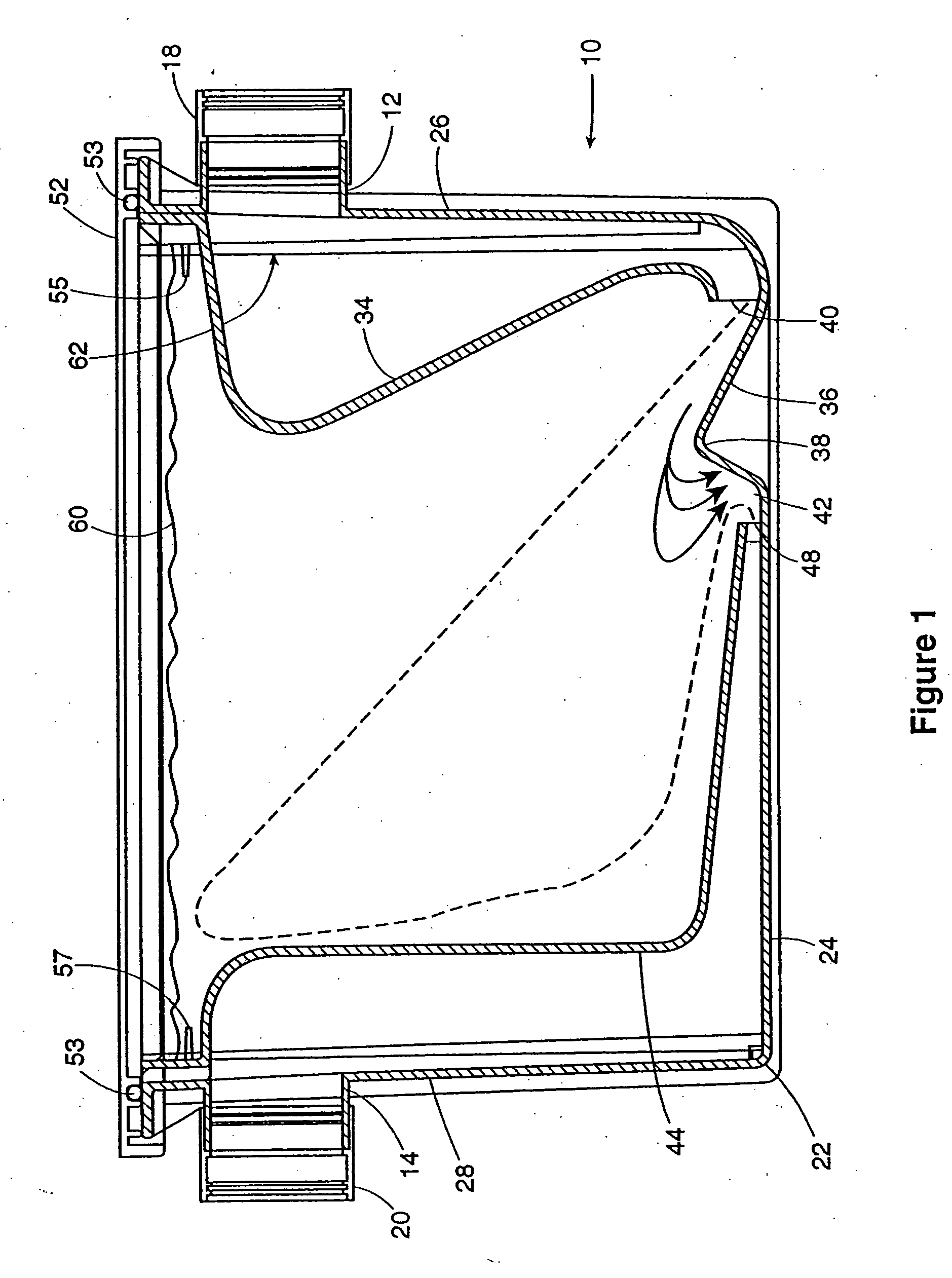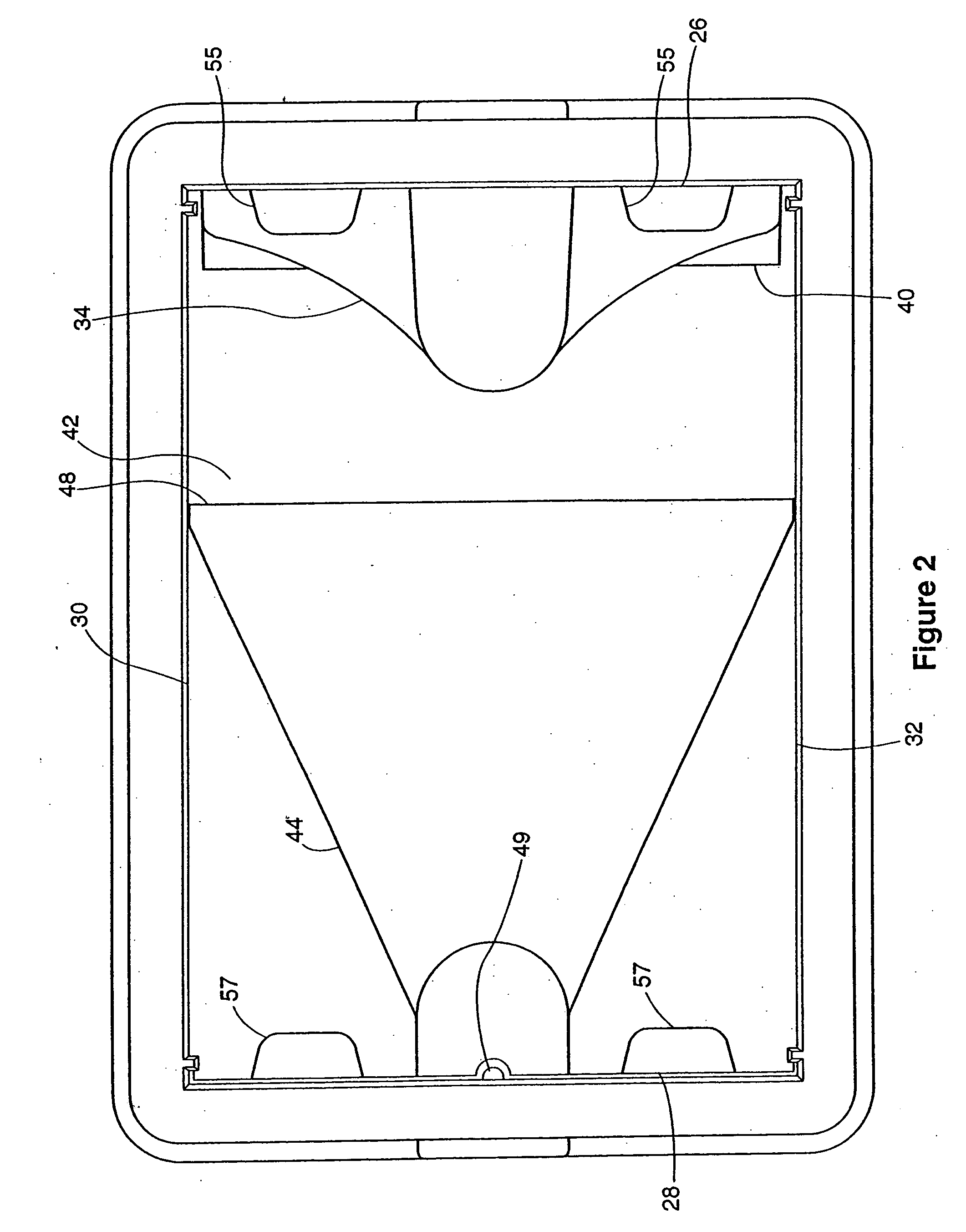Wastewater separator and method of using same
- Summary
- Abstract
- Description
- Claims
- Application Information
AI Technical Summary
Benefits of technology
Problems solved by technology
Method used
Image
Examples
Embodiment Construction
[0036] Referring now to FIG. 1, the wastewater separator is generally designated by reference numeral 10. The wastewater separator 10 is for separating waste from a mixed wastewater stream before the disposal into a sewer system, where the mixed wastewater stream includes heavy waste, light waste and water. “Heavy waste” includes bits of solid food and any other waste with a density greater than that of water. Similarly, “light waste” is any waste in the mixed wastewater stream which has a density less than that of water, such as, for example, grease and oil. It will further be appreciated that the present invention is directed to a self-contained device which is used on an inlet to a sewer system from a commercial or industrial premises involved, typically, in food service preparation.
[0037] The wastewater separator 10 comprises a wastewater inlet 12, a wastewater outlet 14 and a separation container 22. The separation container 22 is filled with water which is the medium typicall...
PUM
 Login to View More
Login to View More Abstract
Description
Claims
Application Information
 Login to View More
Login to View More - R&D
- Intellectual Property
- Life Sciences
- Materials
- Tech Scout
- Unparalleled Data Quality
- Higher Quality Content
- 60% Fewer Hallucinations
Browse by: Latest US Patents, China's latest patents, Technical Efficacy Thesaurus, Application Domain, Technology Topic, Popular Technical Reports.
© 2025 PatSnap. All rights reserved.Legal|Privacy policy|Modern Slavery Act Transparency Statement|Sitemap|About US| Contact US: help@patsnap.com



